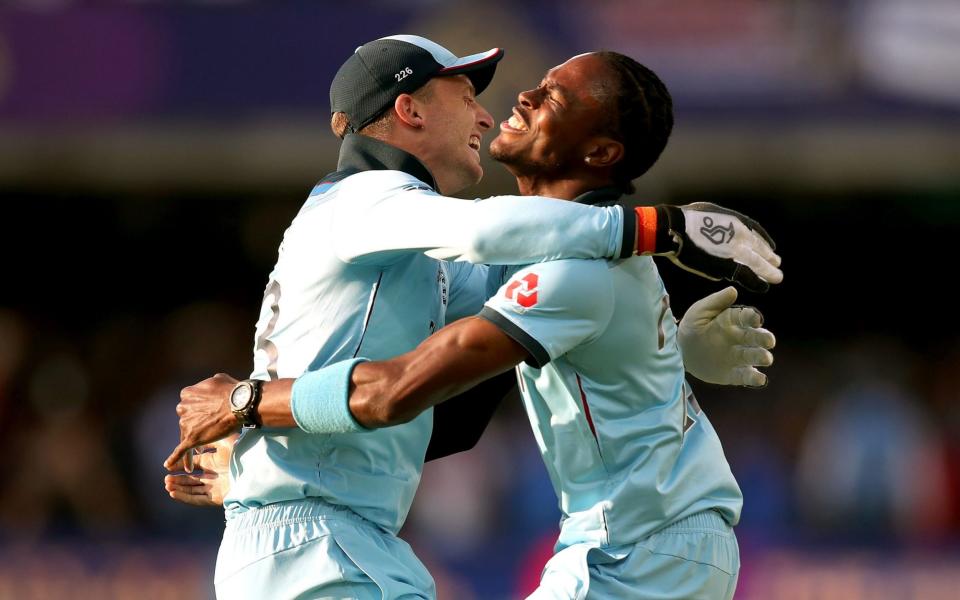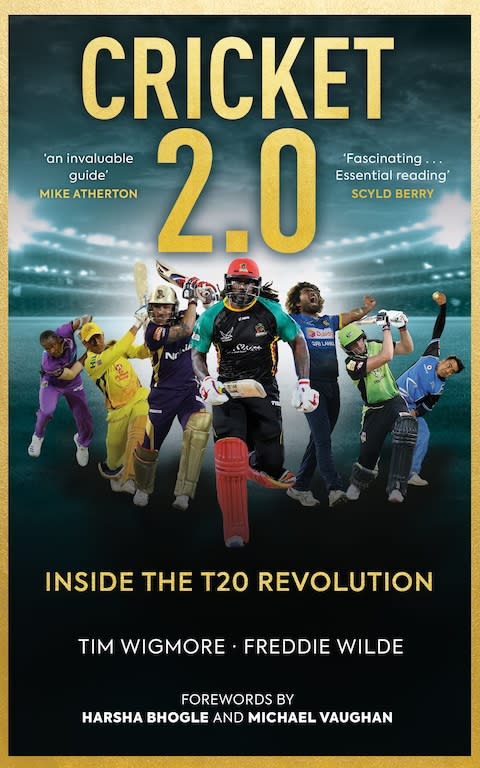How England learned to love the IPL - and win the World Cup

In the final extract from their new book 'Cricket 2.0: Inside the T20 Revolution', Tim Wigmore and Freddie Wilde examine how English cricket's belated decision to embrace the Indian Premier League led to their most glorious moment in white-ball cricket.
Distrust and jealousy had been wired into England’s relationship with the Indian Premier League from its very first days. Those in the English establishment who feared the league’s clout found it comforting to deride the IPL as brash and crass: frivolous entertainment, but not serious sport.
After England’s humiliating performance in the 2015 World Cup, Andrew Strauss, newly appointed as England’s director of cricket, was the first involved in running the English game to embrace a simple truth. There were serious sporting - not just commercial - benefits to the IPL. It was a competition in which cutting-edge ideas and knowledge carried across national lines. Strauss noted that, of the four teams in the 2015 World Cup semi-finals, 38 out of the 44 players had IPL experience. He believed that England needed more players in the IPL if their limited overs team was to keep up.
In 2012, only three years earlier, Kevin Pietersen’s determination to play in the IPL - against England’s wishes - underpinned the schism with the team during Strauss’s captaincy. Yet in England’s first match after the 2015 World Cup, captain Eoin Morgan was 5,000 miles away, playing for Sunrisers Hyderabad. Such was Strauss’s determination that English players should get more IPL exposure.
Previously, “we only had a couple of players that ever went and it was seen as a bit of a taboo place to go,” Morgan recalled. He had always resisted England’s caricature of the IPL. “When you have the biggest tournament in the world, demanding the best players in the world, when players go for large sums of money, it’s a compliment to them as a player to start with but it also brings added pressure.”

In 2016, Sam Billings entered the auction at Strauss’s encouragement but received such a low fee – Rs 30 lakhs (approximately £31,000) – that, when taking into account reimbursing his county Kent, Billings was actually losing money from his IPL experience. Strauss used the ECB’s coffers to reimburse Billings. Where once the ECB dissuaded their players from taking part in the IPL, now it actively paid them to do so.
The number of English players in major T20 leagues snowballed. Before 2015, an average of 12 English players per year appeared in major overseas T20 leagues; since 2015, an average of 35 have. England’s previously tortured relationship with the IPL gave way to a new virtuous cycle: as more England players got picked in the IPL, the country’s limited overs cricket improved. And as England’s limited overs cricket improved, so more England players got picked in the IPL.
By the time of the 2019 World Cup, all of England’s 15-man squad had played in a major overseas T20 league, compared with just six in the 2015 squad. The transformation that Strauss envisaged was complete.

And it was thanks to T20 leagues that England identified Jofra Archer’s talent, encouraging the ECB to change the eligibility rules so that he could play in the World Cup. While Archer was a newcomer to international cricket, T20 leagues gave him ample experience in the most pressurised games. Archer, 24, had played more Big Bash and IPL matches than all but three of the 22 players in the World Cup final.
The extraordinary denouement to that July day encapsulated the IPL’s role in England’s limited overs metamorphosis. In the Super Over, England’s three batsmen and bowlers - Jos Buttler and Ben Stokes, and then Archer - were also England’s three most successful IPL exports. The IPL was the hidden hand in the best day in the history of England’s limited overs cricket.
© Tim Wigmore & Freddie Wilde 2019. From Cricket 2.0: Inside the T20 Revolution (Polaris £17.99). To order, call 0844 871 1514 or visit books.telegraph.co.uk.

 Yahoo Sport
Yahoo Sport 





































